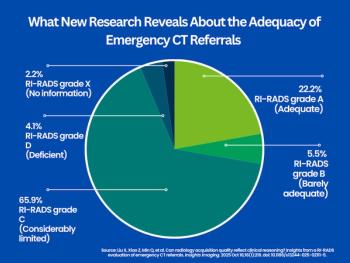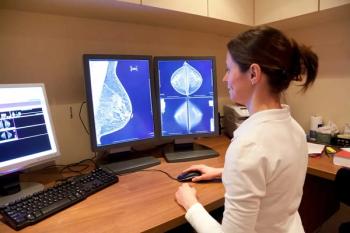
Ultrasound diagnoses idiopathic carpal tunnel better than physical exam
Ultrasound exams of patients with a history of idiopathic carpal tunnel are better diagnostic tools than the standard physical maneuvers known as Tinel’s sign and Phalen’s maneuver.
Ultrasound exams of patients with a history of idiopathic carpal tunnel are better diagnostic tools than the standard physical maneuvers known as Tinel's sign and Phalen's maneuver.
Dr. Antonio Naranjo and colleagues in the rheumatology department at the University of Las Palmas de Gran Canaria, Spain, published their study in the November/December 2007 issue of the Journal of Clinical and Experimental Rheumatology. They studied 68 patients with 105 wrists showing symptoms of carpal tunnel syndrome.
To be included in the study, patients had to have experienced a loss of pain sensation along the median nerve daily for at least three months, and the results of a nerve conduction study on the wrist had to be positive. Cases were not excluded if they had negative results with Phalen's maneuver or Tinel's sign.
A rheumatologist who was blinded to the earlier diagnoses conducted ultrasound exams on all cases, checking the median nerve from the inlet to the outlet of the carpal tunnel. He measured the mean cross-sectional area at each level, flattening ratio, and bowing of the flexor retinaculum.
The results showed that ultrasound measurements were more sensitive, specific, and accurate than Tinel's and Phalen's signs. The researchers achieved a 100% positive predictive value using a swelling nerve cutoff of 13 mm2at the tunnel inlet. This involved 33 hands, or 31% of the group. The most effective swelling nerve cutoff was 9.7 mm2 at the tunnel inlet, at 86% sensitivity, 48% specificity, and 77% accuracy.
Using measurements of the maximal cross-sectional area resulted in an accuracy of 72%, and measurements of the flexor retinaculum had an accuracy of 73%. Researchers found Tinel's sign, the standard diagnostic physical maneuver, was 73% sensitive and 40% specific, and Phalen's maneuver was 67% sensitive and 30% specific.
Combining the results of the physical tests and sonography was not more accurate than using the cross-sectional area alone.
The researchers concluded that ultrasound has a higher diagnostic value than physical maneuvers for patients with idiopathic carpal tunnel syndrome.
Newsletter
Stay at the forefront of radiology with the Diagnostic Imaging newsletter, delivering the latest news, clinical insights, and imaging advancements for today’s radiologists.

































